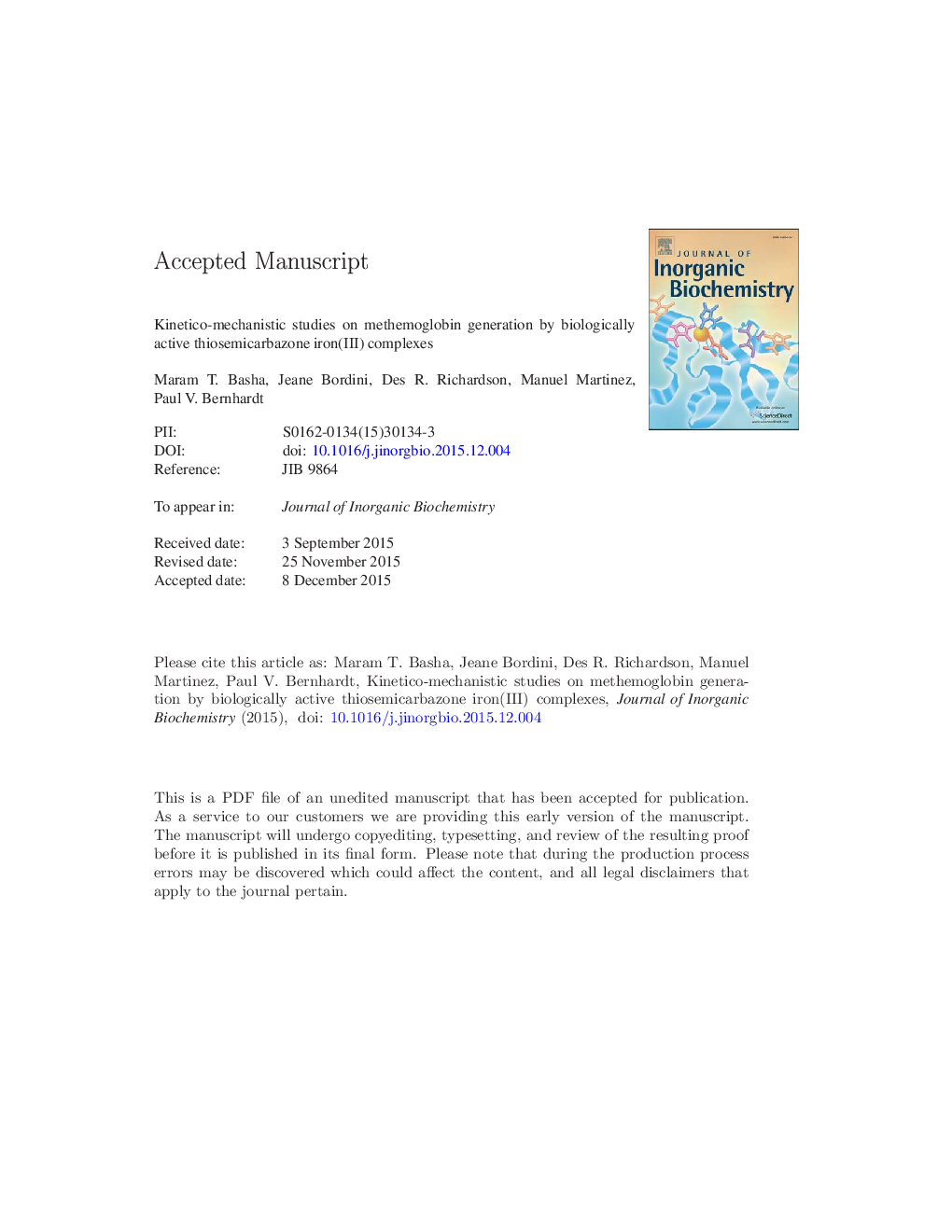| Article ID | Journal | Published Year | Pages | File Type |
|---|---|---|---|---|
| 7754654 | Journal of Inorganic Biochemistry | 2016 | 31 Pages |
Abstract
The oxidation of human oxyhemoglobin (HbO2) to methemoglobin (metHb) is an undesirable side effect identified in some promising thiosemicarbazone anti-cancer drugs. This is attributable to oxidation reactions driven by FeIII complexes of these drugs formed in vivo. In this work the FeIII complexes of selected 2-benzoylpyridine thiosemicarbazones (HBpT), 2-acetylpyridine thiosemicarbazones (HApT), and the clinically trialled thiosemicarbazone, Triapine® (3-amino-2-pyridinecarboxaldehyde thiosemicarbazone, H3-AP), have been studied. This was achieved by time-resolved UV-Visible absorption spectroscopy and the sequential oxidation of the α- and β-chains of HbO2 at distinctly different rates has been identified. A key structural element, namely a terminal -NH2 group on the thiosemicarbazone moiety, was found to be an important common feature of the most active HbO2 oxidising complexes that were investigated. Therefore, these studies indicate that an unsubstituted -NH2 moiety at the terminus of the thiosemicarbazone group should be avoided in the design of future compounds from this class.
Related Topics
Physical Sciences and Engineering
Chemistry
Inorganic Chemistry
Authors
Maram T. Basha, Jeane Bordini, Des R. Richardson, Manuel Martinez, Paul V. Bernhardt,
